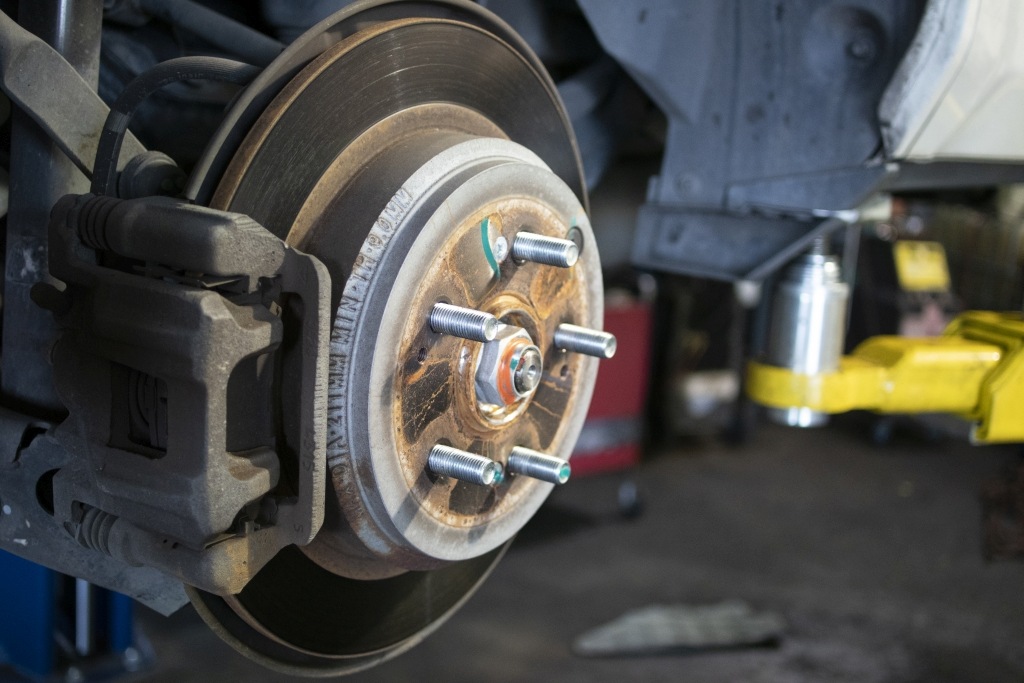Brake calipers hold your vehicle together, and without them, it wouldn’t be unjust if you park them right away. They have rubber seals to exert pressure on the moving rotor to stop it. However, since they are mechanical components, they also outlive their effectiveness.
There are some symptoms that a defective brake caliper exhibits. If you can understand the car’s sounds and responses when you apply brakes, you’ll never be late for a caliper replacement.
Although, the symptoms listed below help identify a bad caliper. But knowing what does a brake caliper do will help you pinpoint the damaged part because a caliper uses various components for effective braking.
Vehicle Drifts Expectedly
The brake calipers control the halting and position of your vehicle. However, worn-out brake calipers can not maintain the vehicle’s balance. Resultantly, the car drifts to one side when you apply brakes.
Another symptom of a worn-out brake caliper is the ineffectiveness of the brake. If the brakes take an observable time to stop the vehicle, you should inspect your brake calipers as early as possible.
Rubbing Sounds
Dirt and humidity cause the calipers to freeze. When the driver applies brakes, the caliper strikes the rotor like a chunk of metal. It causes a metallic-like rubbing sound.
Although, the causes of rubbing sounds may also be due to other issues. However, the most legitimate reason is a defective caliper.
Brake Fluid Leakage
If your brake fluid accumulates underneath your parked vehicle, you must immediately take it to a mechanic. The disc braking system uses brake liquids to create the necessary pressure, which travels to the calipers. Leaking of brake fluid causes the brakes to fail and endangers the drivers and other passengers in the vehicle.
Unevenly Worn Brake Pads
The above symptoms are always visible when a caliper goes bad. However, if you cannot identify any of them, check your brake pads. In normal functioning, the caliper pushes the brake pads against the rotor equally.
However, it applies uneven force on the brake pads when it deteriorates. It, in turn, leads to uneven wear of brake pads and reduces the brakes’ effectiveness.
Soft Brake Paddle
Defective calipers soften the brake paddles. Usually, pressing the brake paddle requires some strength. The calipers multiply that exerted pressure.
However, worn or improperly functioning calipers soften the brake paddle. If you notice a soggy brake paddle, take the vehicle for an inspection because the brakes are likely at fault.
Warning Lights
If you have an old vehicle, you can check for the signs above to know if the brake calipers are working right or not. However, since it is an uncertain process, modern-day cars have a warning light.
The anti-lock brake light on your dashboard indicates an issue with the calipers or other parts of the braking system.
How Much Does It Cost to Replace a Brake Caliper?
Commonly the overall replacement costs of brake calipers are about 250 to 600 dollars. However, these figures vary depending on the vehicle’s model.
The price of an independent caliper shouldn’t be more than 125 dollars. But the labor costs depend on the complexity of the braking systems.
The Bottom Line
Brake calipers are an essential component of the braking system. Therefore, overlooking their deteriorations and defects makes the vehicle unsafe. Since brake calipers are mechanical parts, they exhibit some symptoms of wear.
The most evident ones are present above. Usually, worn calipers are identified by softened brake paddle and reduced braking ability. However, other signs like abnormal sounds, vehicle drifts, and brake pad wear also point to a defective caliper.
Vehicles with faulty calipers are unsafe to use. So, you should either take them for fixing or avoid driving them if a visit to a mechanic is not on the urgent schedule.
